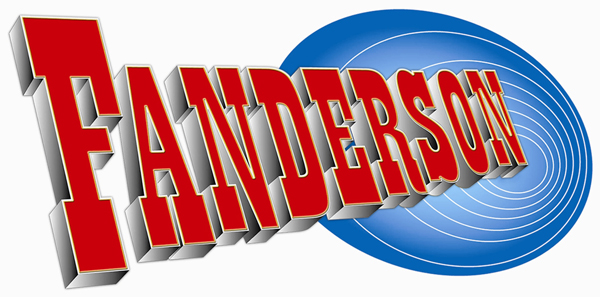Reg Hill, art director and producer of the Gerry Anderson Supermarionation shows, died in October at his home in Weybridge, Surrey, The artist and model-maker, who designed Supercar, Fireball XL5 and Stingray, had been suffering from kidney failure for a number of years.
An artist who worked in advertising at Odhams Press before wartime service as an airframe fitter in the RAF, Reg Hill was encouraged by a friend to join the film industry after the war. For twelve years, he worked on instructional films for the Army at National Interest Picture Productions, films that required a large amount of model work and animation. It was here that Hill met cameraman John Read and via Read’s association with Gerry Anderson at Polytechnic Films, both men joined Anderson at Pentagon Films after the collapse of Polytechnic, and this subsequently led to their involvement in the formation of AP Films.
Initially, Hill was responsible purely for design and art direction at the company, working with Bob Bell on the creation of the sets for The Adventures Of Twizzle and Torchy The Battery Boy, but his technical and organisational skills led him to take an increasingly important role in the production of the Supermarionation series. With John Read, he worked on perfecting the electronic lip-synch device which spawned the Supermarionation process, used for the first time on Four Feather Falls. With Gerry Anderson, Hill developed the idea for Supercar, designing and building Supercar himself. Later, he designed both Fireball XL5 and Stingray, two of the best-loved vehicles in television science-fiction.
Credited as associate producer on Thunderbirds, Hill took over the producer’s reins for Captain Scarlet And The Mysterons, and then became executive producer on Joe 90 and The Secret Service, assuming control of the later Supermarionation television series while Gerry Anderson concentrated on the company’s feature film projects. He went on to produce UFO – a series that he co-created with Anderson – and the thriller series The Protectors, and later became Production Executive on the second season of Space:1999. He continued to work in the film industry as an illustrator on films such as Superman The Movie (1978) and Lifeforce (1985), but retired from the business shortly after completing work on this latter film.
Of his time working on the Supermarionation productions, Hill was quoted as saying, “We didn’t do the puppets because we wanted to. We did them because we had to. We were looking for work. A lot of our professional friends in the film industry thought we were barmy, and we didn’t really want to be associated with the puppets. The only way that we could make them bearable for ourselves was to add something. What you see is what we added, such as the detail in the sets, which was unheard of in a puppet series. We tried to put in elements that made it look as real as possible.”
Paying tribute to his former AP Films and Century 21 partner, Gerry Anderson described Hill as, “A Jack of all trades. He was a brilliant designer and art director, and an outstanding model-maker. He trained Bob Bell, who later took over the department from him. He played a major role in the setting up of our Special Effects department and the training of Derek Meddings. Together with Christine Glanville, he made a major contribution to the technical design of the puppets using the engineering skills he acquired from the RAF. After our company was taken over by ATV, we moved into a brand new studio which was created by Reg from two new factory units. It was the world’s most advanced puppet film studio.
“Not only was he a wonderful artist and innovator, he was also a great organiser and a stickler for safety at the studios, always checking small but important points, like the accessibility of the fire exits. A lot of people ridiculed him over his attention to detail, but I always thought this was very sad. When a tragedy happens, people are all too quick to point the finger and say things like, ‘Why was the fire door locked?’ He was often branded as an old woman, but he didn’t worry. Safety came first for him and he always had my full support.
“The only thing that Reg did not do well was to sell himself. The media latched on to the idea of Gerry and Sylvia Anderson, the husband and wife team. For them it made a good story and they pushed it like mad. Reg was the producer of Thunderbirds and the managing director of our company. I was the chairman and it should have been Anderson and Hill, but no matter how hard I tried, it never appeared that way in the press. It was terribly unfair that Reg, a major contributor to those series, was denied the spotlight despite his significant role. He gave the films tremendous production values even when he had to work with low budgets. There was never any wastage in his art department; he would build exactly what was required and no more.
“His contribution has been greatly underestimated. With his dry sense of humour, Reg was a pillar of strength throughout the great Century 21 adventure.”
Originally published in FAB 38.
